
Fountain Pens : the art of reducing your Carbon footprint.
A Fountain Pen is also mightier than the sword as a tool to fight global warming. Oh yes, it is, and I will tell you how you can wield one to stave off climate change. Not reverse its ill effects that have already started to manifest themselves, but at the least, not to be a contributing factor.
Well, I’ll be honest upfront – I use the computer all the time to earn my victuals. And being a professional writer, I am kind of dependent on word processing software. But give a chance, I draw out my fountain pen from the shirt pocket and write – literally, putting pen on paper. The first is my profession, the later my passion. It’s the appetency thing, you know. Say whatever you may, the “n” number of so-called benefits notwithstanding, keying in words just don’t measure up to the spectacle of seeing your words form even as the ink dries. It never has, it never will. And yes, I do carry a notebook and also, do prefer taking down notes physically, like my father and my grandfather did before me.
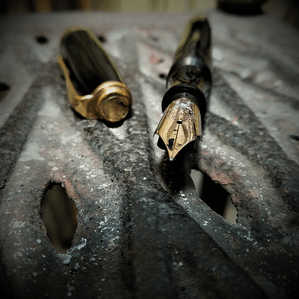
Call me an anachronism, you may, but let me tell you this – it has been clinically established that when one writes, physically that is, pen on paper, the parts of the brain that stimulates creativity are assuaged. Well, in my case they also activate the flowing of the happiness hormones – Oxytocin and stuff like that, but then again, you can always write me off (no pun intended) as a penophile. It is also more or less well established that people who take down notes by hand relate better to them and have been seen to have better retention of the contents. Besides, as many young people are now writing testimonies, falling back on the fountain pen is a kind of a release, a catharsis – a silent protest against the all-pervasive computerisation, against the digital damnation of their lives, a detox regimen.
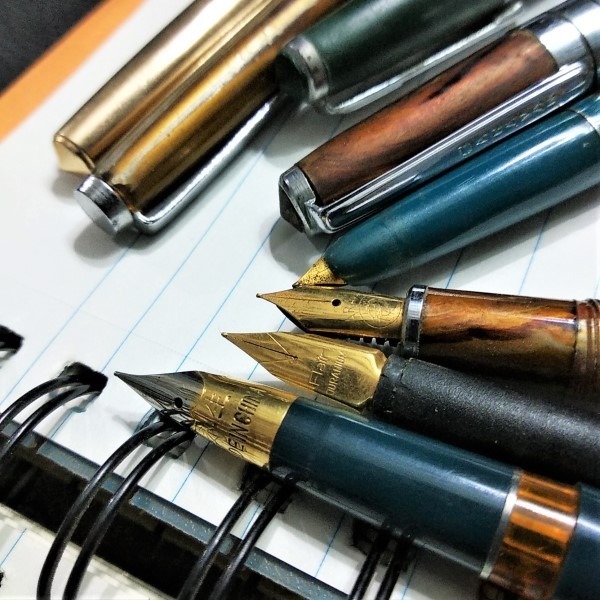
A fountain pen lasts much, much longer than the use and throw ball-point pens that clutter your desk. And, when you throw them away after they dry up, they either end up as land fill or float all the way to the seas, adding to the already out of control menace of piling up toxic plastic. The ink that we use in our fountain pens, even the dye-based, “cheap” ones (as opposed to inks made from natural ingredients that are climate friendly) are much less demanding on the fragile eco-systems where they ultimately end up – another sustainable advantage over the use and throw’s .

Then again, if you are an ancient mariner, and are enamoured with fountain pens that are at the least vintage, if not antique; chances are that they were made out of ebonite, or similar materials that originated in naturally occurring resins and rubber compounds. Not only have they lasted much longer than the cheap usurpers but are also witness to successive generations of their so-called “replacements” having piled up in the dump. One decent Fountain pen and a bottle of ink, versus your average ball point – go ahead, do the maths. There is a thing called life-cycle assessment when costs are assigned, after all.
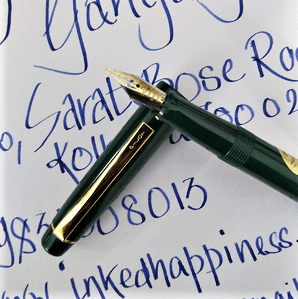
Okay, I admit. I am in love with my handwriting and have been known to look at my written words with indulgent eyes, even to the consternation of my critics. Yes, writing with a fountain pen slows me down considerably (as opposed to the frenetic pace in which I key-in), which is not really a bad thing considering the fact that the leisurely gait helps me articulate my thoughts better leading to less wastage, is actually good for my heart because of its stress reducing qualities and the very fact that it leads to enjoyment adds to its value by putting on leash my primal instinct of joining the rat race that ultimately leads nowhere.
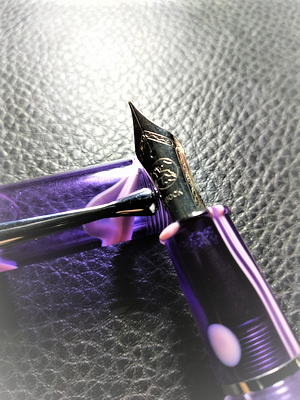
That leaves us with the paper – you know paper, that is responsible for the wanton destruction of the Amazon rain forests and literally disfranchising the protective cover against the harmful effects of Carbon emissions. Well, often your printer uses more paper than you do while writing – I use both sides of the paper to write on, my printer doesn’t. Besides, the electricity that the computer and the printer guzzles come from an energy basket that is still overwhelmingly comprised of fossil fuels, the dirty guys of energy. Beat that.
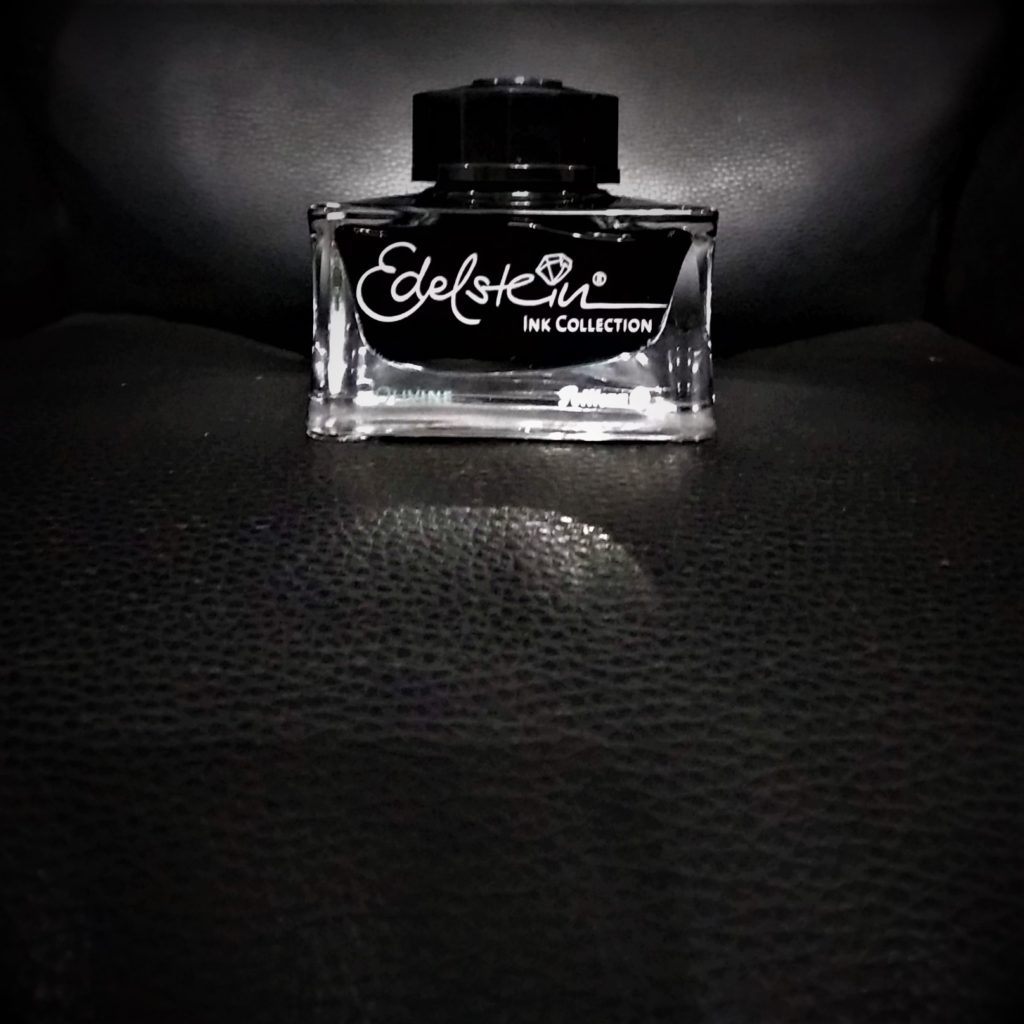
Sustainability is defined as a requirement of our generation to manage the resource base such that the average quality of life that we ensure ourselves can potentially be shared by all future generations. The resources at our command are finite, but our wants are infinite, and we can make the twain meet, only by being responsible, by putting a cap on our urge for conspicuous consumption.
I rest my case. I have ingrained sustainability in my life instead of relegating it to be a mere afterthought and I have done it by uncapping my fountain pen. What is stopping you from picking up one that will give you immense pleasure today, help you be on the right side of the green line, apart from being something that you can bequeath to the future?


extremely refreshing take on a subject that is gaining wide currency – global warming. trust you to liken that to what is your obvious passion for everything ink-o-matic. loved the way you have articulated your argument. did i say that it is always a pleasure to read your articles? greetings of the season my friend. may the new year see more people enjoying and sharing your passion. may the pen become mightier than ever in your hand.
thank you for your kind words. my pens and i stand indebted. they join me in wishing you all that is good in the world. do keep coming back for more
Chawm
Fallen in love with this piece. Thanks a lot..
If writing eco-friendly is you goal:
1) Use a refillable fountain pen. Truth is, you cannot write a lot with the amount of ink that’s in a cartridge, so better use a tank that can be refilled.
2) Write with a pencil. A good one, not the cheap no-names. From a company that is aware, and uses wood from properly managed forests and plantations. Thing is, a good wooden pencil writes A LOT. The Germans have a unit for that, called “Schreiblänge” (writing length). A wooden pencil of medium hardness reaches 40-50 km length – a fountain pen a measly 300 m (sic. 0.3 km) per cartridge/tank filling (hence: refill!) A good mechanical pencil that lasts could even be better (no wood), but I have found no data on writing length, yet. But wooden pencils aren’t bad: the waste is bio-degradable. Again, if the manufacturer works well.
wow! that is such an interesting take. thank you so very much for reaching out. would love to follow the leads that you have provided and who knows? I do prefer using eye-dropper filler pens, though am just not used to mechanical pencils….thank you again for your comment